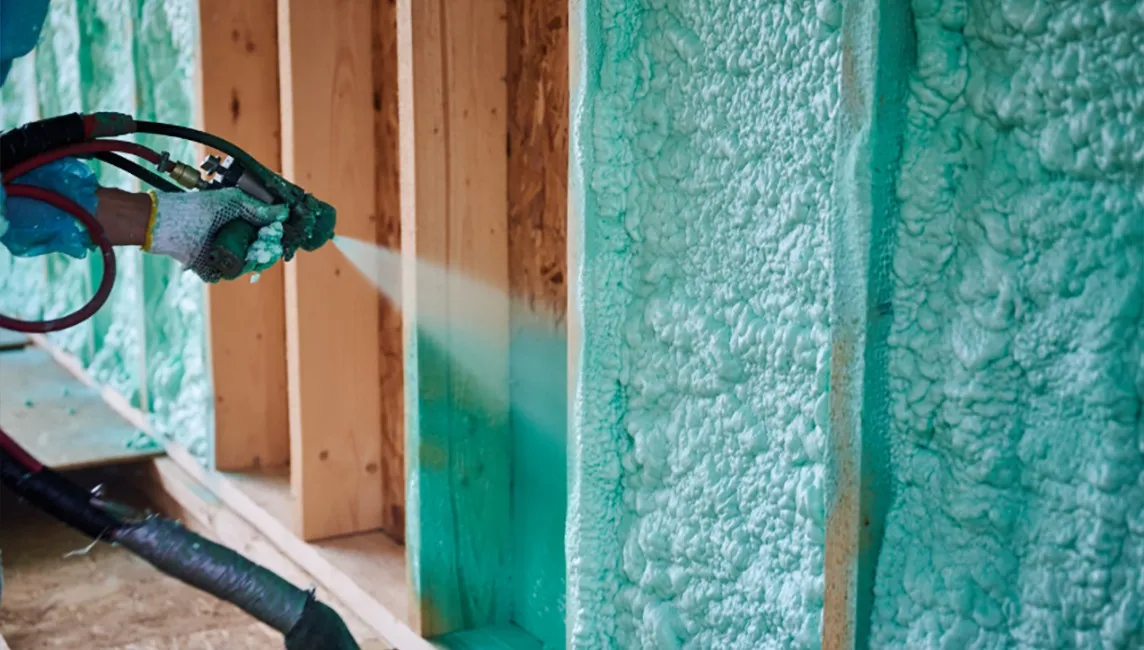Spray Foam Insulation And Mortgage Lending
Regularly presented as an efficient way of insulating a home, spray foam has almost become the new Japanese knotweed in the mortgage space, and presents additional challenges when trying to lend against a property.

An Overview For Consumers
Additionally, with over 250,000 homes in the UK featuring it, spray foam has become an increasingly hot topic in secured lending. So, what is spray foam, why could it sound like an attractive proposition, and why won't lifetime mortgage providers lend against it?
What is spray foam?
Spray foam insulation, otherwise known as spray polyurethane foam (SPF), is an alternative insulation technique that sits alongside more traditional solutions such as mineral fibre rolls or fibreglass wool.
As the name suggests, the foam is applied via spray guns in a liquid state and then hardens into a solid coating. Because it's applied in a liquid form, compared to solid-state insulation such as fibreglass or wool, it can be applied more easily in various settings, such as floors, walls, lofts or roofs. In mortgage lending, whether residential or lifetime, the focus on applying it to a property's roof space, is the main problem.
It's also worth noting that there are two types of spray foam. Open-cell spray foam insulation contains cells which aren't completely encased, offering a spongier and more flexible material. On the other hand, closed-cell insulation has an entirely sealed cell structure, meaning air and moisture can't get in, resulting in a firmer and more stable end product.
Why could spray foam sound appealing?
SPF has historically been sold on its insulating qualities (which in turn can reduce energy bills) – it's important to stress that this isn't inaccurate. As we'll see, if anything it almost does too good a job. However, many property owners aren't made aware of the long-term issues.
The availability of government grants has also made many people give thought towards making cost-effective improvements to their homes in the interests of energy efficiency and trying to ensure they're making that grant go as far as they can. This will doubtless go some way to explaining the increase in homes applying spray foam in recent years.
Why is SPF an issue for mortgage lenders?
Whether it's a residential mortgage or an equity release product from a lifetime mortgage lender, many don't accept spray foam insulation under their criteria considerations.
In essence, applying spray foam to a roof space can restrict air circulation, breeding condensation and potentially leading to the rotting of the roof timbers. Closed-cell spray foam also runs the additional risk of setting very hard, potentially placing additional stresses on the supporting timbers and distorting the roof itself.
The fact that the foam is sprayed in a liquid form means it gets into crevices and gaps, making it incredibly difficult to remove and very costly. In some cases, the expense of removing it may exceed the original installation cost. Additionally, in some cases the foam will have been sprayed directly onto the back of the roof tiles themselves, making it impossible to remove without replacing the entire roof. Even after removal, there's no guarantee it would be approved for a mortgage, as the damage may have already been done.
The situation is further complicated in the case of lifetime mortgage lenders, as the mortgage is usually redeemed and repaid via the sale of the property. With residential mortgage lenders also being cautious about spray foam, the property could only be available to cash buyers, which also seriously affects its resale value.
What conversations should you be having with your adviser?
As there's a near-blanket refusal on spray foam at the time of writing (save for a couple of instances where referrals may be possible under very stringent conditions, including a very specific type of foam having been used), addressing this early on can save everyone a lot of time, and allow you to reassess your position and explore other avenues to reach your financial objectives.
It's also important to be aware of the consequences of having spray foam installed post-completion of your lifetime mortgage. While you might view it as a minor home alteration and as a result consider having it done without notifying your lender, the reality is that it has major knock-on effects– both as a mortgage breach and the ability to sell the property to redeem the mortgage.
Hopefully this article has given you a better understanding of spray foam and its complications. Often viewed as a simple insulation tool, the reality, is sadly far more complex within the realms of lifetime and residential mortgages.
Browse more articles
Continue your later life finance journey by reading more of our insightful articles designed to support informed decisions.

Planning and lifestyle
